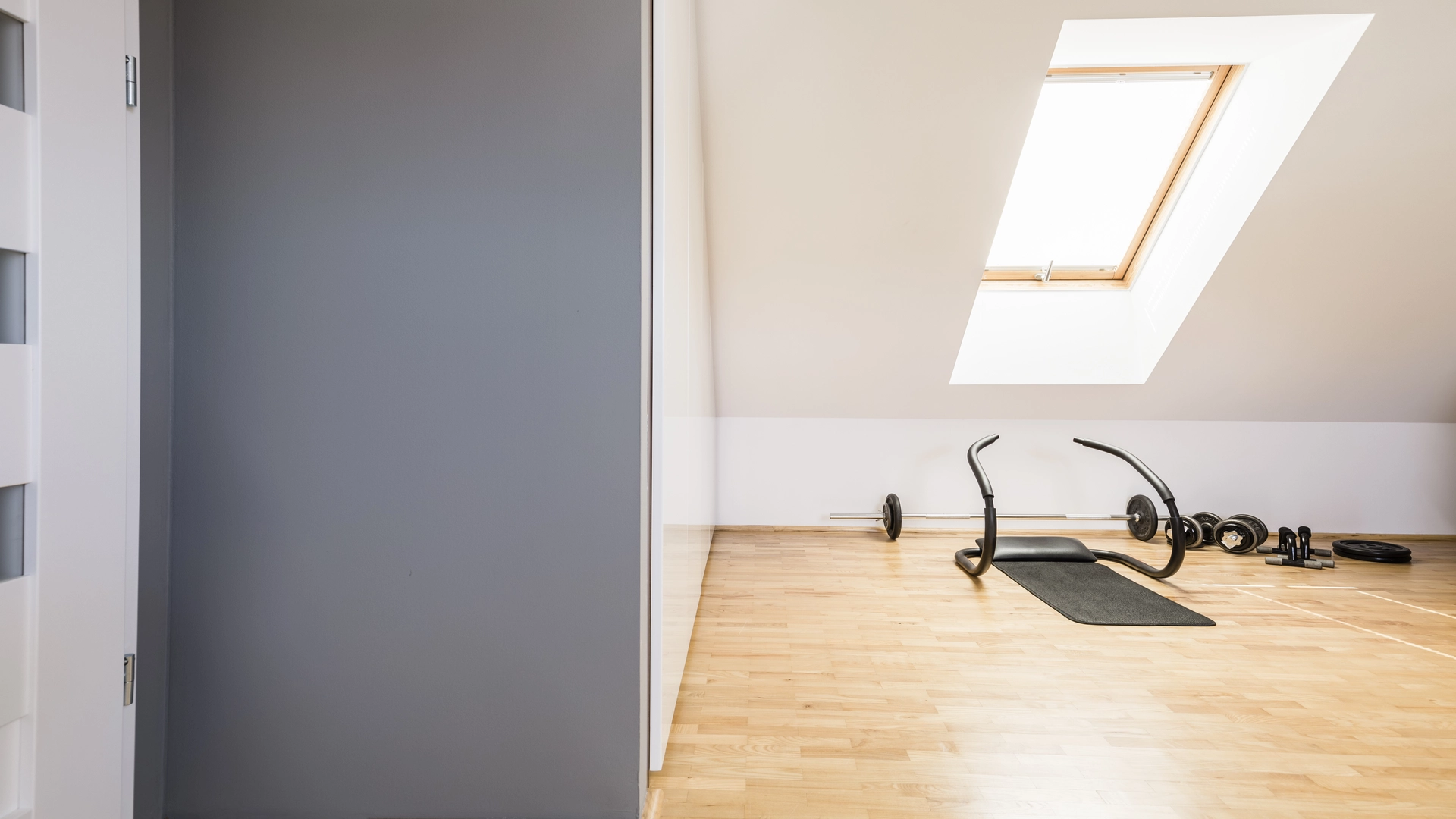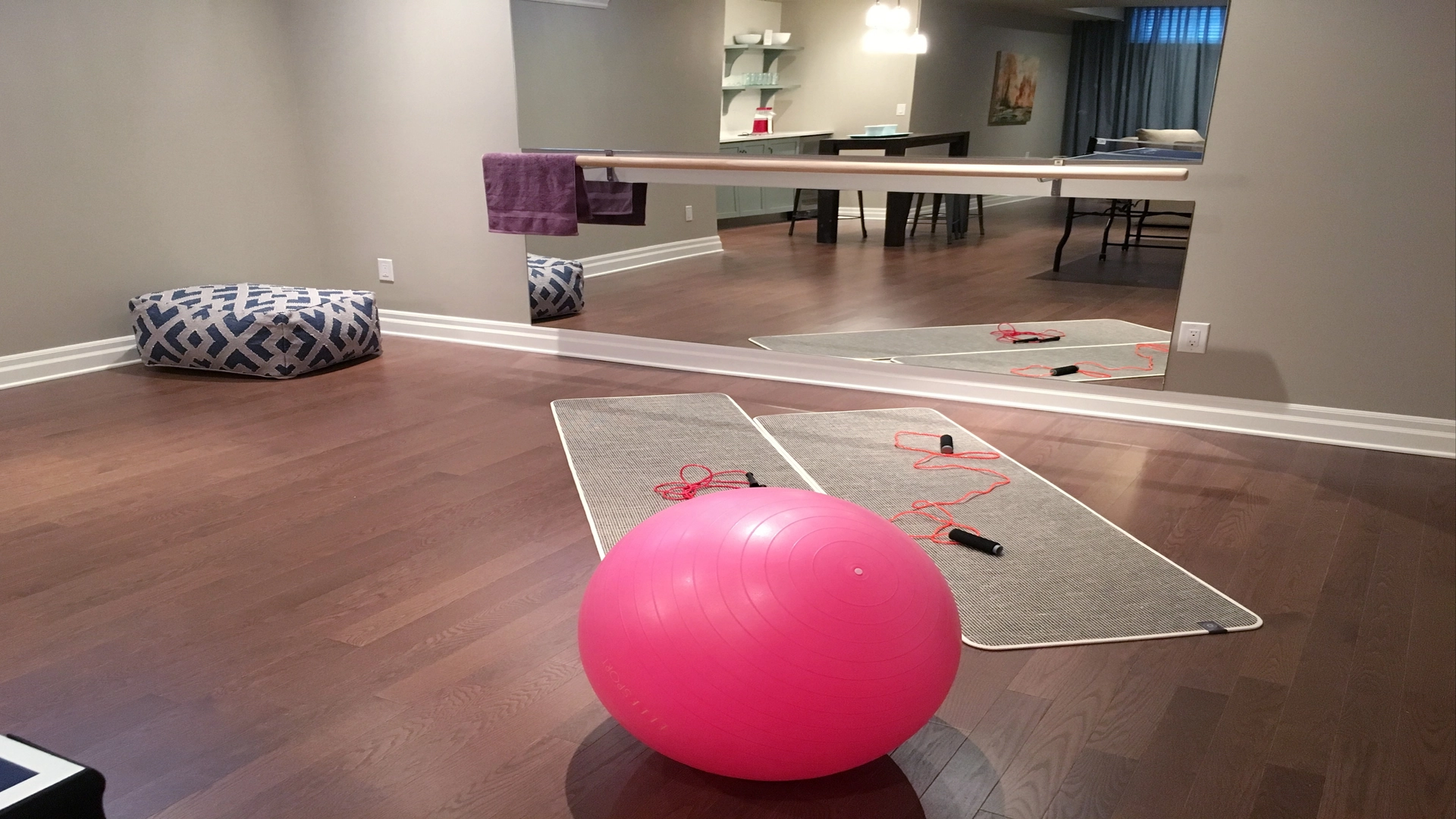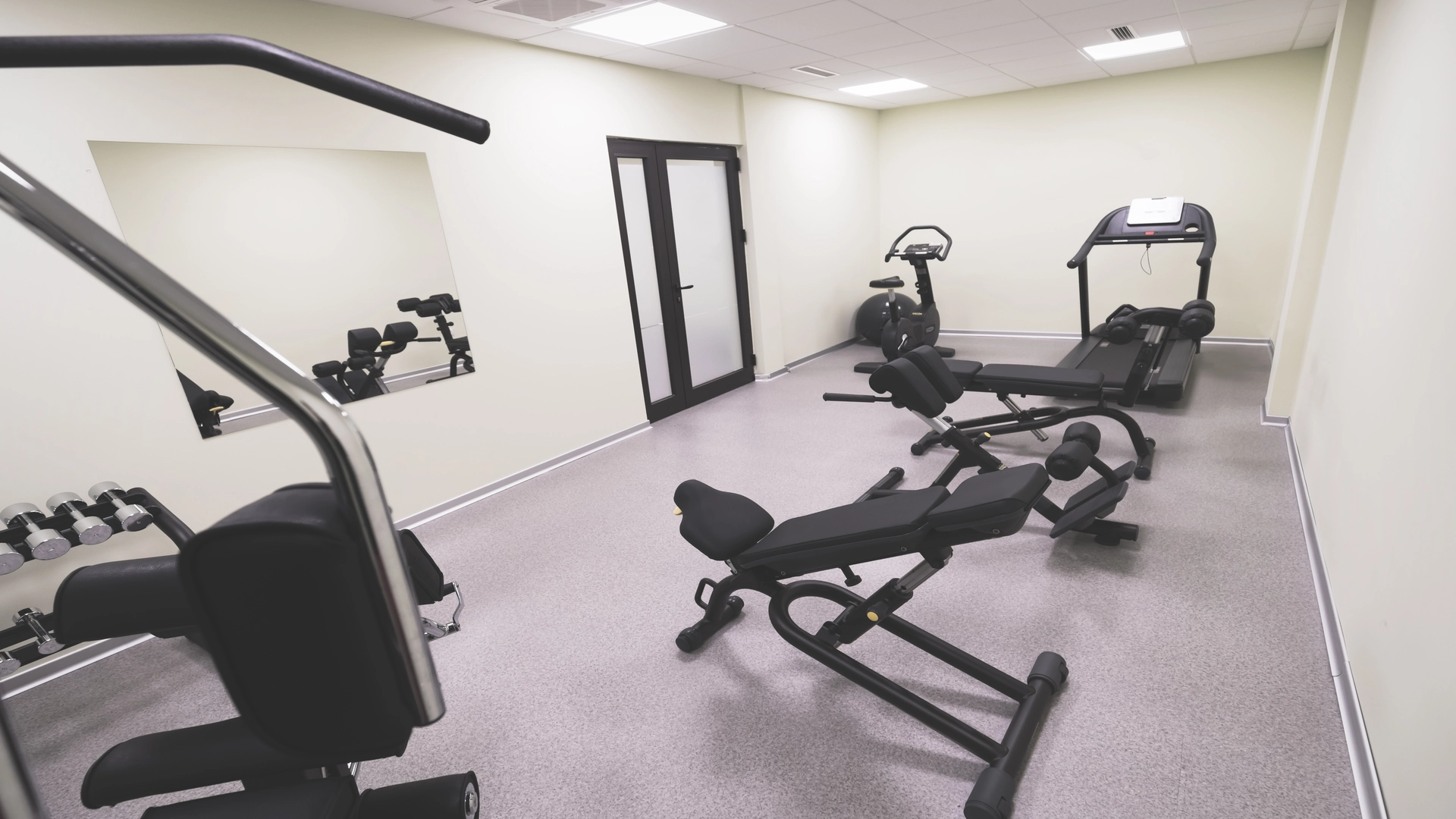Transforming your basement into a Home Gyms is a practical and rewarding venture that brings fitness convenience to your doorstep. In this comprehensive guide, we will explore the step-by-step process of converting your basement into a functional and inspiring workout space. From choosing the right equipment to optimizing the layout for maximum efficiency, we’ve got you covered. Say goodbye to expensive gym memberships and hello to the ultimate convenience of a home gym. Whether you’re a fitness enthusiast or a beginner looking to start a healthy lifestyle, this guide will provide you with valuable insights to create a personalized fitness haven in the comfort of your home.
Let’s delve into the world of home gyms and discover how to turn your basement into a space that not only promotes physical well-being but also aligns with international standards of quality and safety.
Home Gyms: Why Choose Your Basement?
Choosing your basement as the perfect spot for your Home Gym comes with lots of benefits. First off, basements provide a big space so you can set up a great workout area with plenty of room for equipment and moving around. Plus, the basement is a quiet and private place, making it easy to focus on your exercises without interruptions. Being separate from the main living areas gives you the privacy you need and keeps distractions to a minimum, creating a dedicated space for your fitness journey.
Another perk is that basements are usually cooler, which is awesome for intense workouts, especially in warmer weather. Turning your basement into a home gym not only uses space smartly but also makes your home more functional overall. When deciding where to put your home gym, think about using your basement. It could be a great spot for a convenient and effective workout space.
Getting Started: Assessing Your Space

Starting your journey to turn your basement into a cool home gym is super exciting! But, before you get all into picking out equipment and planning where everything goes, let’s start with something important: checking out your space.
First off, grab a tape measure and figure out how big your room is. You want to make sure it’s just right for your dream home gym setup. Imagine how tall the room’s ceiling is, notice how the air moves around, and think about where the sunlight enters. These things matter because they help make your workout spot the best it can be.
Look around for anything in the way or stuff that’s part of the room’s structure. This helps you know where you can put your gym stuff without any problems. Doing this check helps you pick the right gear and makes sure your home gym is safe and works well. It’s like building a strong foundation for your Home Gyms adventure!
So, before you start picking out cool exercise toys, take a good look around. Measure things up, check for obstacles, and plan it out. Make your home gym amazing and just right for you with these tips!
Essential Equipment for Home Gyms
Setting up a cool Home Gym is super fun and easy! All you need are some cool things to get started. First, grab some dumbbells – they’re like magic wands for making your muscles strong. Resistance bands are like giant rubber bands that make your workouts even more exciting. Get a large, bouncy stability ball – it’s like having your own exercise playground! And don’t forget a workout bench that can do lots of tricks. Lay down your yoga mat for comfy stretches and exercises on the floor.
Now, let’s add a bit of zoom! You need a cardio buddy, like a treadmill or a stationary bike – they’re like magic carpets that make you run or pedal fast! Switching between exercises is super cool, so get an adjustable bench. And guess what? You can’t leave your gym messy, so grab some cool storage to keep everything neat.
Remember, good stuff lasts longer, so make sure your gym gear is super awesome. Now you’re all set for the best Home Gym adventure ever!
Lighting and Ventilation for Home Gyms

When you’re turning your basement into a cool Home Gym, two really important things are lighting and ventilation. Lighting is super crucial because it makes your workout space safe and full of energy. You want to avoid shadows and make everything bright. So, think about putting in those bright LED lights that save energy—they’ll make your Home Gym look awesome and prevent accidents.
Now, let’s talk about ventilation. That means making sure the air in your gym stays clean and comfortable. You don’t want it to get all stuffy and hot when you’re working out. So, consider adding fans or a good air system (that’s HVAC) to keep the air moving. This way, you’ll always have a cool breeze and won’t feel like you’re working out in a sauna.
Taking care of lighting and ventilation isn’t just about making things look good. When your Home Gym has good lighting and fresh air, it becomes a place where you want to be. So, when you’re turning your basement into a Home Gym, don’t forget to make it a bright and breezy space where you can get fit and have fun.
Designing Your Space for Motivation
Setting up your home gym in the basement? Awesome! Let’s make it super motivating! First off, put mirrors in smart spots. They make your space feel big and help you check your workout moves. Paint the walls with cool colors like blues and greens – they boost your mood and focus. Add motivational quotes or cool pictures that match your fitness goals. Place your gear in a neat way for a smooth workout flow. Get some storage to keep things tidy and your mind clear. Designing your home gym like this turns it into a fitness and happy zone. Making your workouts not just effective but also a ton of fun!
Addressing Sound and Noise
When you’re setting up your home gym, it’s super important to think about the noise it might make. Home gyms are great for personal fitness, but they can sometimes be noisy and bother people in your house or your neighbors. To make your exercise spot peaceful, put special mats under things like treadmills and weight benches to soak up the noise.
Get dumbbells made of rubber to keep the banging down, and think about putting in a ceiling that keeps the sound in. Making your basement into a home gym takes careful planning, and dealing with the noise means your fitness space stays a calm and quiet part of your home.
Budgeting for Your Home Gym
Creating a home gym in your basement is a fantastic way to stay in shape without going out. But, when you’re getting started, make sure to think about your budget and plan wisely. Home gyms can cost different amounts depending on the equipment you choose, so it’s smart to spend your money wisely.
First, figure out your fitness goals, and then focus on getting the essential equipment like dumbbells, a strong workout bench, and maybe a treadmill or stationary bike. To make the most of your budget, think about buying second-hand equipment or looking for affordable alternatives. Keep in mind that investing in good quality equipment is worth it because it lasts longer and makes your workouts safer.
When setting up a home gym, use space-saving stuff and tools that can do multiple things. This helps you create a good home gym without spending a lot. Home gyms are handy and can be adjusted, making them a good choice for your health and happiness. If you plan your budget smartly, you can have a home gym that works well and is fun without costing too much.
Maintaining and Upgrading Your Home Gym

Creating a cool home gym in your basement is super exciting, but keeping it awesome over time needs some attention and occasional upgrades. To make the most of your Home Gyms, remember to clean things up regularly and check your gear. Wipe down surfaces, sanitize equipment, and look for any signs of wear and tear to make sure your workout spot stays safe.
Upgrade your home gym with cool equipment that can handle various exercises. Also, consider getting durable flooring and good ventilation to make your workouts more enjoyable. And hey, don’t forget to look at your fitness goals every now and then. Maybe you need to add some new gear or change up how things are set up. By always taking care of and updating your Home Gyms, you’re not only making it last longer, but you’re also making it super awesome for all your fitness stuff. Make sure your home gym is always tidy and smells nice, and it will be a great spot for your workouts!
FAQs on Home Gyms
How much does it usually cost to make a home gym?
Creating a home gym typically incurs varying costs based on individual preferences and needs. On average, a budget-friendly setup might start around $500, encompassing essentials like resistance bands, dumbbells, and a yoga mat. Mid-range options, including a cardio machine like a treadmill or stationary bike, could range between $1,000 to $3,000. For those seeking a comprehensive setup with high-end equipment such as a power rack, weights, and a multifunctional machine, the investment could surpass $5,000. It’s crucial to note that prices can fluctuate based on brands, quality, and the inclusion of specialized equipment.
How much space do I need for a basic home gym?
Make a small home gym with not much space. You only need about 50 to 200 square feet. Put in important things like a workout mat, dumbbells, bands, and a stability ball. Get things that can be easily put away, like foldable benches or small exercise machines. Arrange everything so you can move around easily and have good air. Make sure the floor is flat and not slippery to stay safe. With a well-planned space, you can work on your fitness at home without needing a lot of room.
Can I turn my garage into a living space instead of using the basement?
When building something, it’s important to know about special rules and permissions. In many places around the world, there are building codes and rules to make sure structures are safe and follow zoning requirements. These rules can be different, so it’s crucial to check and follow local building laws before starting any construction. Usually, getting permits from local authorities is a normal step. Not following these rules can cause legal problems and safety issues. It’s a good idea for builders to talk to local authorities, get help from professionals who know the rules, and get the right permissions. This helps make sure construction goes smoothly and follows the law, creating safe and lasting structures.
Do we need special rules or permission to build something?
When you’re building something, it’s really important to know about special rules and permissions. In most places around the world, there are rules (called building codes) to make sure buildings are safe and follow the law. These rules can be different, so it’s very important to check and follow the rules in your area before you start building anything. Usually, you need permission from local authorities, which is a normal step. If you don’t follow the rules, you can get into trouble and the building might not be safe.
What are the best practices for soundproofing a home gym?
To make a quiet home gym, do these things:
- Cover Walls: Put special panels on the walls to soak up sound.
- Fix Doors: Use special strips on doors so sound doesn’t get out.
- Floor Help: Use rubber or soft floors to stop noise from exercises.
- Machine Pads: Put heavy machines on special pads to stop noise.
- Curtains or Blinds: Use thick curtains or blinds to stop sound and outside noise.
- Quiet Machines: Get machines that don’t make a lot of noise.
- Good Spot: Put the gym away from bedrooms and shared walls for less noise.
Conclusion
Converting your basement into a home gym is a rewarding venture that not only promotes a healthier lifestyle but also adds value to your home. By carefully planning and considering all aspects of the transformation, you can create a personalized fitness haven that fits your needs and preferences. Say goodbye to commuting hassles and hello to the convenience of a home gym tailored just for you. It’s a step toward a healthier, happier you, all within the comfort of your own home.
